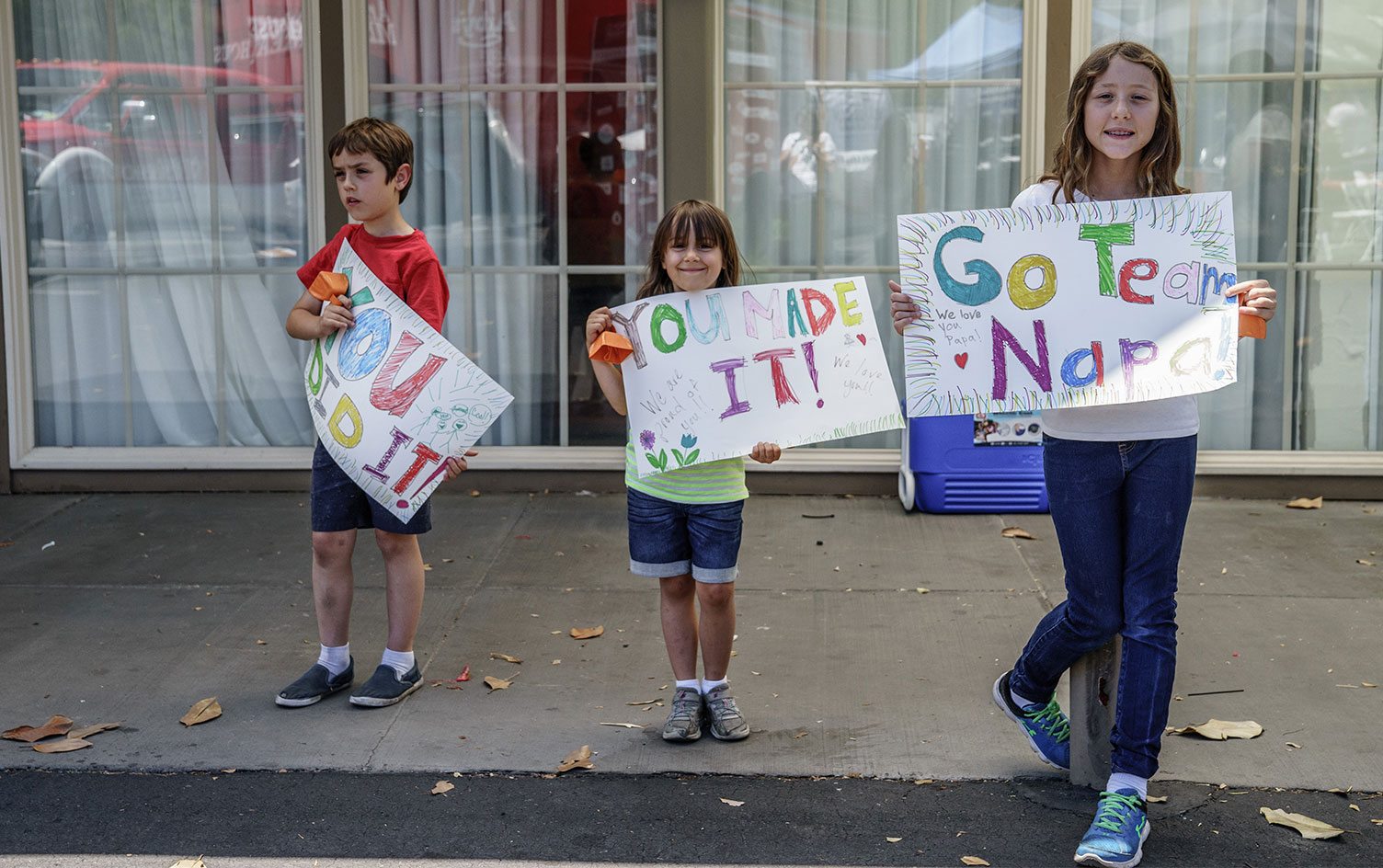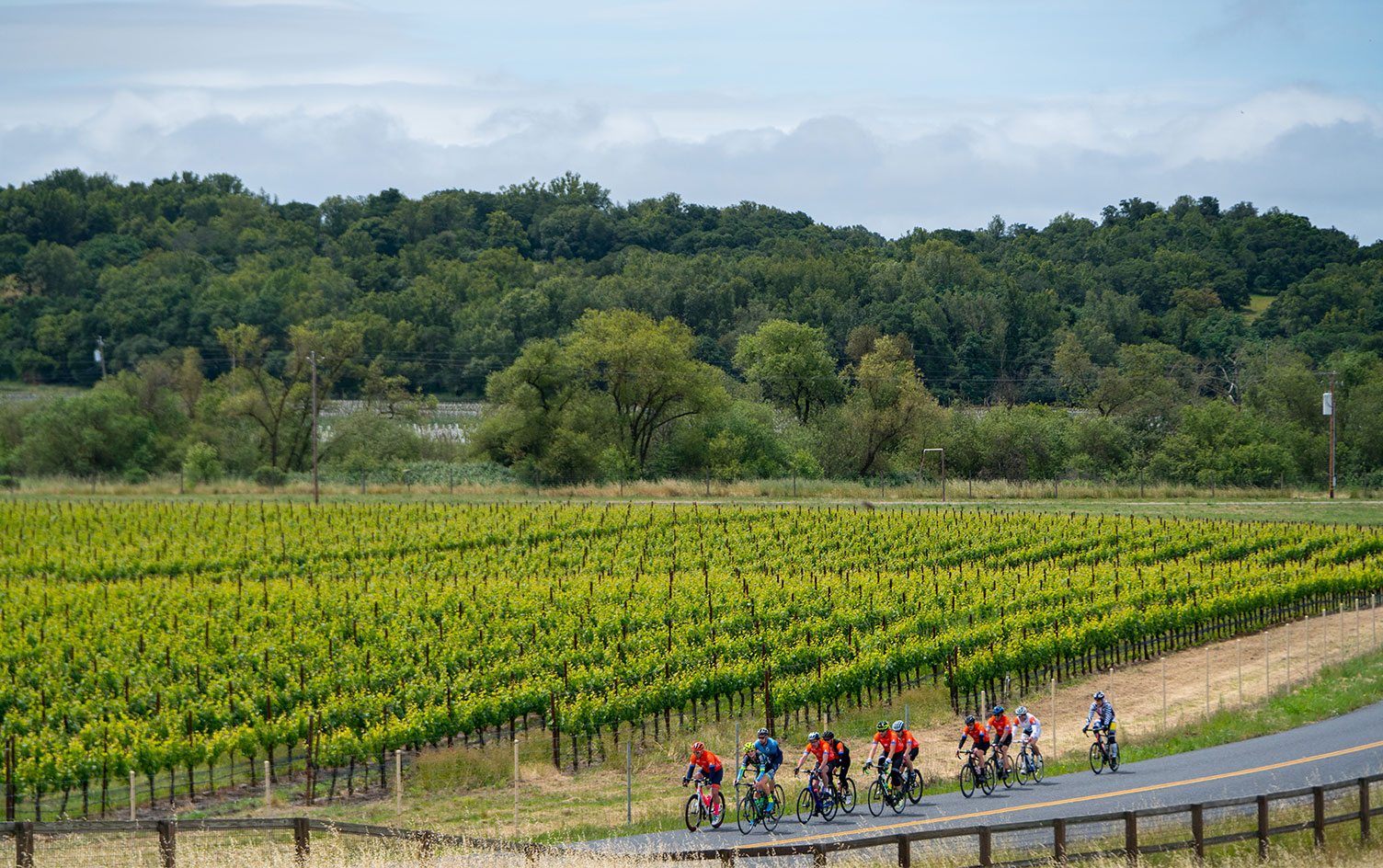
There are so many benefits of doing good beyond the act itself. Studies show that when we help others, we reduce stress, prolong life expectancy, lower blood pressure and increase happiness. All of this comes as no surprise after participating in a charity ride called Chefs Cycle for No Kid Hungry. I was among 235 riders who pedaled 300 miles over three days to raise awareness and money to fight childhood hunger.
It was amazing to be part of a group that raised nearly $2 million (they’re still accepting donations through June 30) for a worthy cause that’s helping solve a solvable problem in this country. We met the principal of a school in Oakland that is participating in the pilot program to offer breakfast in the classroom for students. She shared with us their discovery of the ripple effect of providing this simple meal. It was astounding: Children’s attendance improved, they learned, they behaved better in class and at home — and the hope is that they’ll thrive, contribute and become our next wave of leaders.

Photo Credit: Natalie Starr
THE NOTION OF “ACTIVE HELPING”
If that wasn’t enough, a strange thing happened to us, the riders, along the way. There’s a secondary consequence beyond the valiant one of helping children. It’s that we got healthier, too. By doing this 300-mile ride over three days, we ended up making better decisions about what we put into our bodies. Maybe we passed on the second glass of wine (or even the first — or is it the third?). Maybe we went easier on the dairy and sugar, and we opted for more veggies. Maybe we ended up losing weight, being less dependent on alcohol or worse things — and maybe that subtle shift reflected on our loved ones and peers.
READ MORE > THE SANDWICH WALKER: ONE MAN’S 100-POUND “ACTIVE-HELPING” QUEST
CHEF TESTIMONIES AND SUCCESS STORIES
At some point it dawned on us that by signing up for this event, we committed ourselves to getting healthier — to taking better care of ourselves, watching our diets and following a training plan. After all, you can’t just pick up and ride 300 miles. No way. Most riders were chefs, a profession known for crazy hours, late nights, drinking and eating too much and stress. Many of these chefs used to be active but then, “life got in the way,” and the pounds crept on.
Take Kevin Nashan of Sidney Street Cafe and Peacemaker in St. Louis, Missouri. He raced in several Ironman triathlons before having kids, then stopped and 70 pounds later, was introduced to Chefs Cycle. Now, after the second year, he’s 56 pounds lighter. “I didn’t think of the impact at first. The kitchen is infectious — if you party, the kitchen parties. If you’re healthy and active, then others get healthier, too,” Nashan points out. “Everyone benefits from a healthy environment. But you’ve got to take care of yourself before you can take care of others.”

Photo Credit: Davey Wilson
Travis Flood, the chef/owner of Pappas Artisanal and Grizzly’s Biscuits & Doughnuts who also volunteered to cook for all of us riders from his mobile kitchen for the past two years, was active as a kid growing up and rode BMX, but didn’t get back on a bike until he heard about Chefs Cycle. At the first ride, he weighed 315 pounds and had fallen into the typical chef lifestyle of drinking and late nights. His reaction upon getting invited to ride: “I don’t wear spandex — 315 pound people don’t wear spandex,” he recalls saying. He lost 50 pounds, completed the ride and he was hooked. After completing this year’s ride, he’s part of the 900-mile club, those who have completed three Chefs Cycle rides, and his goal for next year is to take another 50 pounds off his 260-pound frame. For him, the commitment to being healthier and active influences his menu. “I started putting healthier things on the menu because they were the things I wanted to eat. It’s more vegetable driven,” he says. “I tell new cooks that meat can be basic — you grill it, roast or braise, etc., but if I get a basket of veggies, the range of dishes is surprising.”
READ MORE > CAMPOVELO: THE MAKING OF A CHARITY RIDE
But it’s not only about losing weight, it’s also about having a healthier mindset and feeling better.

Photo Credit: Natalie Starr
Mary-Frances Heck, “Sweet Potatoes” cookbook author and former test kitchen director at Bon Appetit, owned a road bike and did triathlons, but never rode 300 miles in a row. This was her second year doing the event, and this year she really focused on nutrition. “I learned a lot from the people I met at Chefs Cycle [the first year], and started reading about sports nutrition as a part of training,” she recalls. While weight loss wasn’t a goal, she noticed that by eating the right foods, she felt much better than she did the prior year. Noting especially that “the recovery meal when you get back from a ride (or workout) makes a huge difference in how you feel.” For her, the nutrition component was a game-changer. “What you put in your body affects hugely how you feel,” she says.
Finally, Philip Tessier, who took silver at Bocuse d’Or in 2015, was a runner and did CrossFit, but he needed something to push him out of his comfort zone. “The charity aspect was something to distract me from the pain and suffering. I told myself ‘I can do this; this is what it’s for.’” He continues, “This was something I could not not train for. I’m putting time and effort into this and I’m committing my time, energy and resources — it felt like there was a balance from an external perspective. The charity aspect removed the ego.”
Heck put it well: “I can’t imagine a chef who’s ever hungry. Chefs are aware of that. This is a physical struggle, but you can’t quit. We’re privileged that we can ride our bikes for charity.”

Photo Credit: Davey Wilson
Without even realizing it, we set out to help others — to help provide food to children who don’t have access to it — and we benefitted in so many ways. It’s all a cycle and it’s all interrelated: With the goal of helping others, we had to take care of ourselves. Then by committing to our own health, we became role models for our peers. Through it all, we never lost sight of the fact that the money we raised provides food for children that will fuel their minds, bodies and ultimately pave the way for their brighter future.

